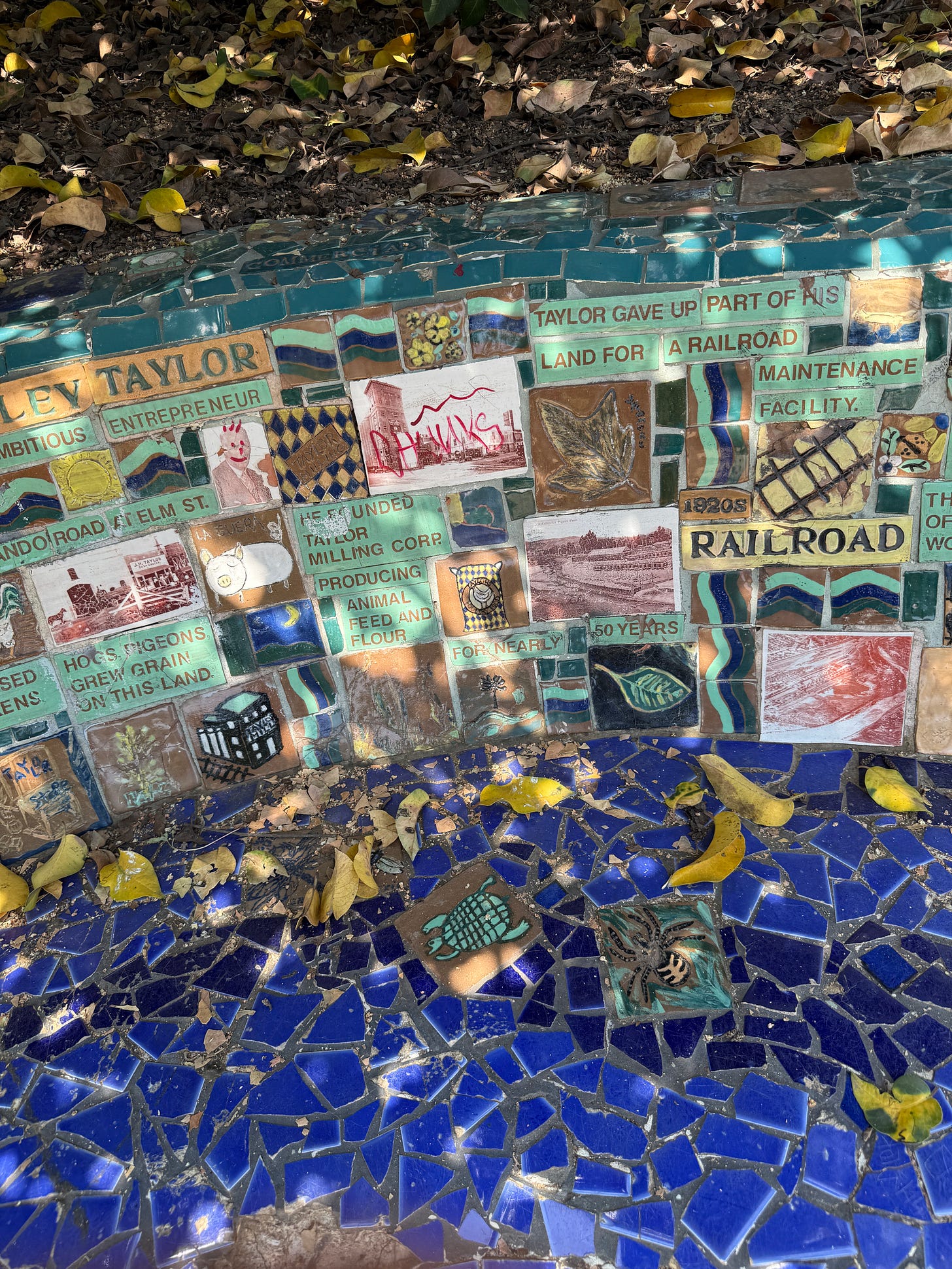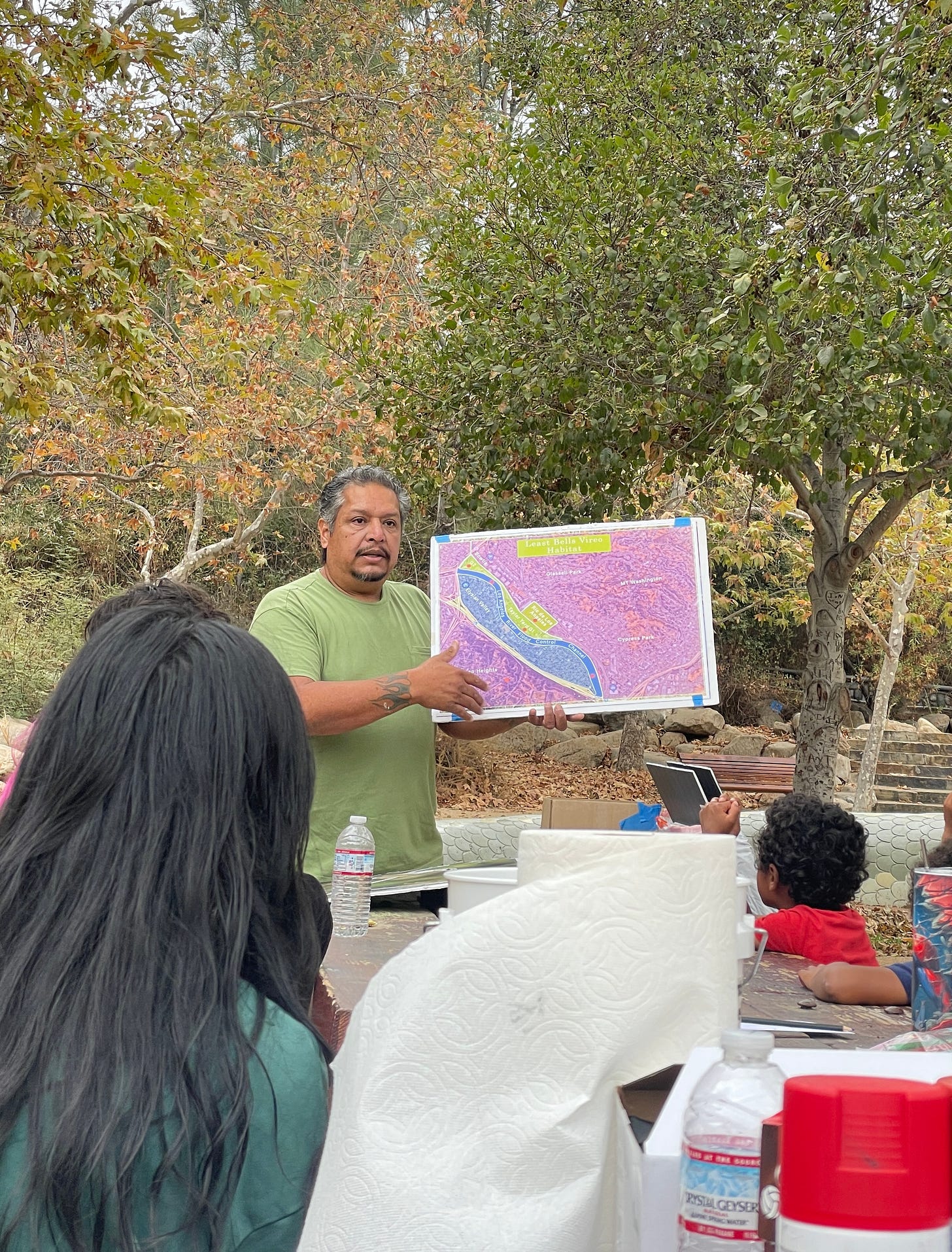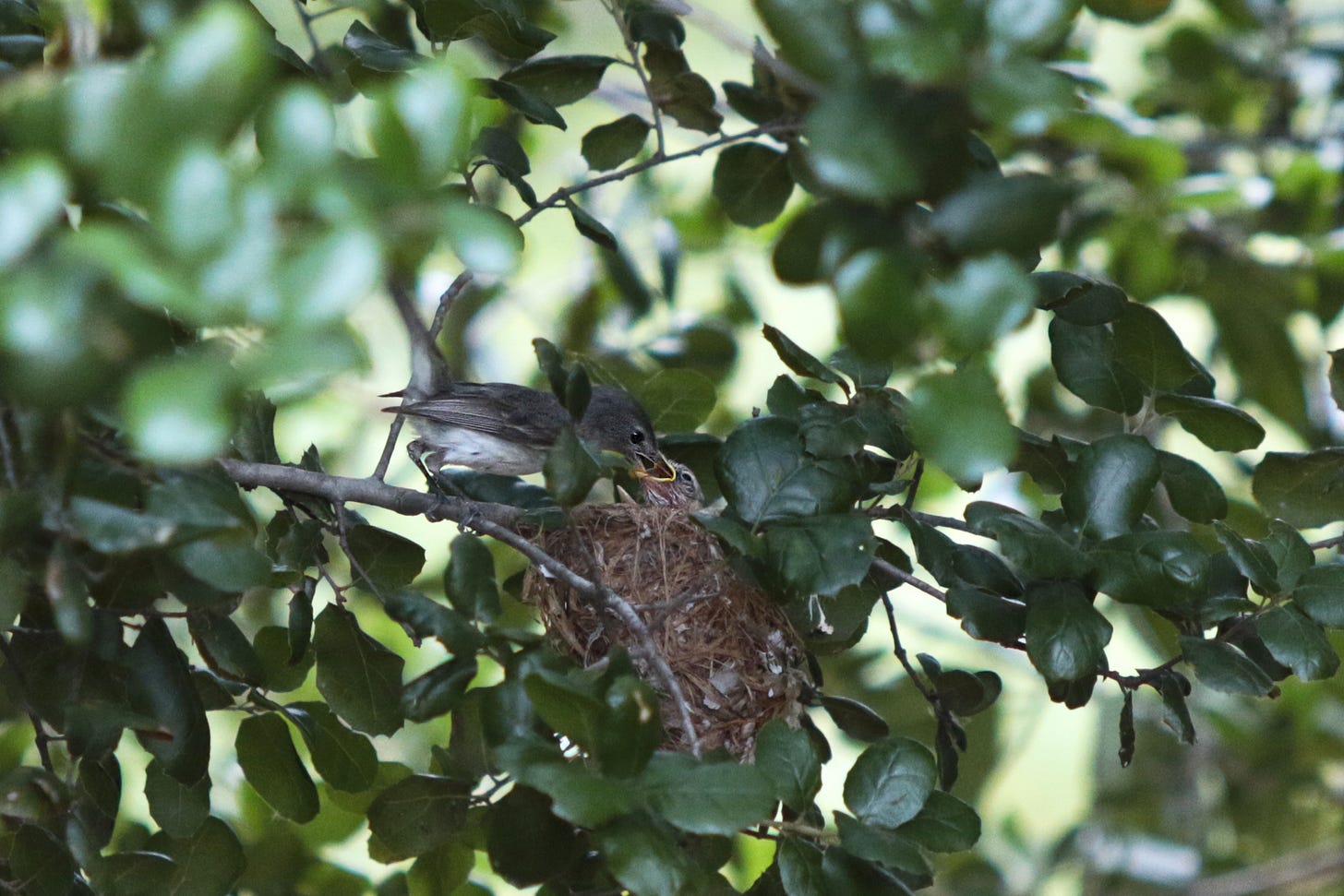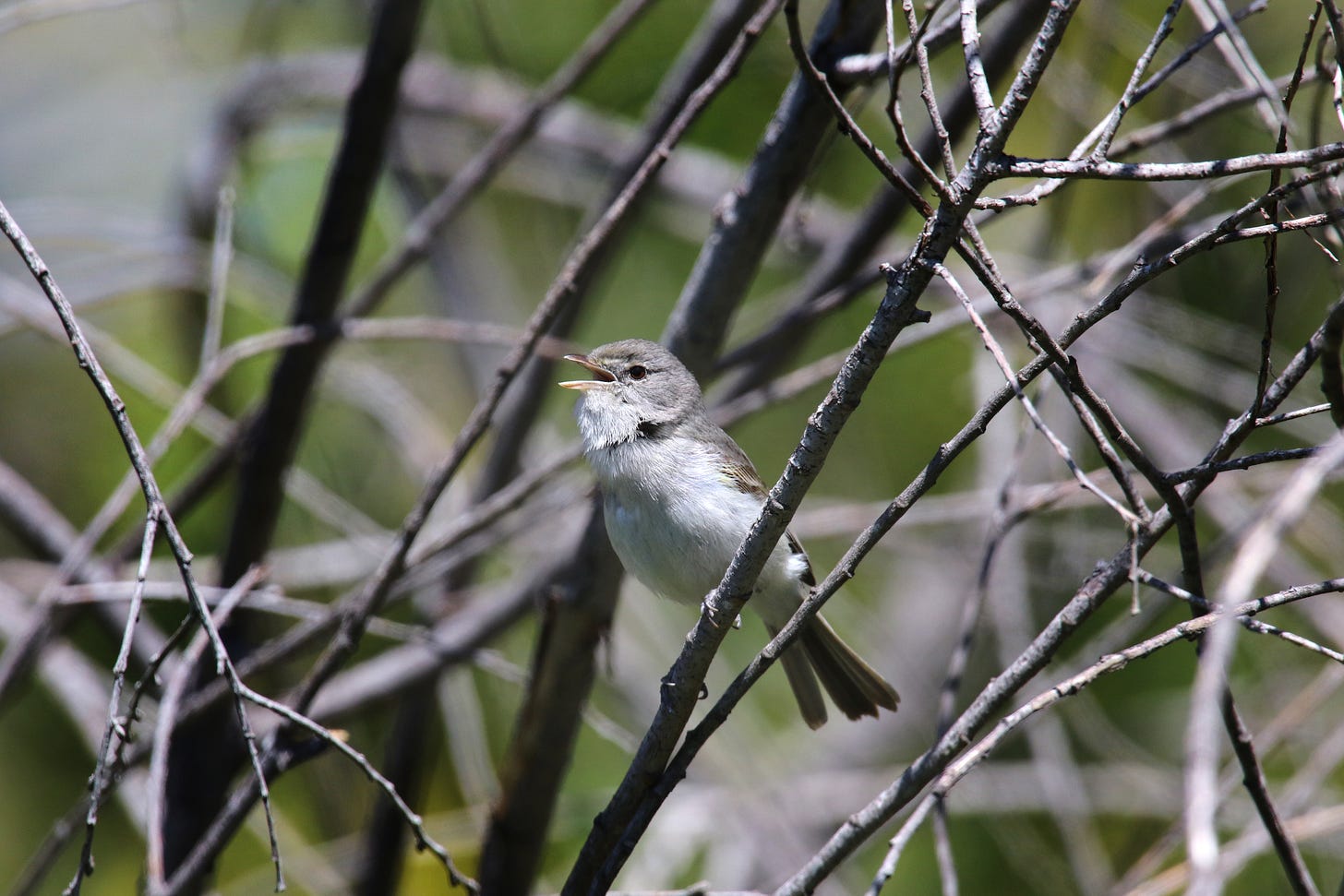Migratory birds don't know borders the way we obsess over them
...así que todavía estamos dispuestos a seguir hasta la victoria
I spent last Friday at the city-owned Penmar Golf Course in Venice with a few friends to celebrate a birthday. Every summer, the golf course hosts a weekly “Sunset Sessions” that opens up half of the land for the public to bring wine, buy pizza, and enjoy live music. I spent $14 on admission followed by several gin and tonics served by overstimulated high schoolers that just started their summer jobs on the golf course. I love being tipsy with my friends in the cool June dusk! And judging by the long line of people waiting to get in even in the last hour of the event, I sensed that plenty of other people also want to be out and about this summer.
How do we make sense of our biological desires for connection being in conflict with connection’s accessibility? Our options for when and where to go nowadays are a little more convoluted, with our favorite parts of parks often being sectioned off for private events. This growing exclusivity in our parks and recreation areas has been living in my head rent free since last month when I followed my new friend Jabz Alejandro Palomino, a founding member of Save the Vireo, around the Rio de Los Angeles State Park State Recreation Area. The new-ish park sits on the former Taylor Yard, an abandoned freight-switching facility that was in use until 1985. Jabz and I walked the circumference of a roped-off section of wildlife, two acres of land situated in the back of the state park, in search of the nesting grounds of the least Bell’s vireo, an indigenous songbird species that has slowly been repopulating the area.
The least Bell’s vireo was listed as endangered by the U.S. Fish and Wildlife service in 1986 primarily due to habitat loss from urban development and recreational expansion. The situation worsened in the 2010s, when “The Bowtie” section of the LA River, near the Glendale Narrows, received a makeover to bring in outdoor recreation enthusiasts. For $40, residents could rent a kayak and float along in treated wastewater. The least Bell’s vireos were displaced from their homes due to this LA River revitalization project, which destroyed wildlife habitat to pilot new recreational zones for fishing and kayaking.
“Recreation means for the people, not for the wildlife,” Jabz reminded me as we paused our walk to listen for warblers and song sparrows. We stood squarely on the gravelly paved trail. To our right was the newly re-wilded refuge area for the vireo and other local species. To our left, and beyond, I caught glimpses of the area that will become a new recreational development next to the train tracks. It flashed into view in between the freight cars of an eastbound train.

In 2017, the city acquired G2 parcel, the northern portion of Taylor Yard, with grand plans under then-Mayor Eric Garcetti to green the area in time for the 2028 Olympics. As a part of the larger LA River redevelopment vision, the plans ambitiously boast a new park space that will restore a native plant palate to the area and provide habitat for local and migratory species. On less savory planning documents, G2 is depicted as one of several large parcels along the river that will turn surrounding areas into mixed-use developments with the support of nonprofits like the Audubon Society and Friends of the LA River to advise on greening, clearing, and sectioning parts of the wild areas. On renderings, groves of Coast Live oak and camphor trees dot the sides of the river, providing shade for those who would walk the river path with family and friends. In reality, the areas are still considered brownfields, or pieces of land that are abandoned or underused, in part, because of concerns about contamination. Not even our most resilient wildlife species could lead healthy lives in these parts.
The least Bell’s vireo is an indicator species. They serve as “early warning systems” for environmental changes. Their absence in places they once called home often portend habit degradation, pollution, and other environmental issues. Knowing that young vireos typically come back to where they were born year after year, Jabz is thus concerned when many of them choose not to return to mate and nest where they once called home.
Indicator species also tell us a lot about our own greening choices, including the lack of momentum and commitment to such choices. It’s not clear where we’re at today with the G2 restoration and LA River revitalization project; the latter’s website still has not been updated with a message from Mayor Karen Bass regarding the plan ever since she took office, flashing instead a curt statement that reads “Welcome to the City of Los Angeles and to the Los Angeles River” (imagine greeting your out-of-towner friend with “Welcome to the LA River”). Locals have not received steady updates on all the design proposals that will eventually expand walkways and greenways near and around Rio de Los Angeles State Park State Recreation Area (which are all considered brownfields at the moment!) to accompany the existing bicycle and pedestrian bridge. And in 2022, the county was sued by two environmental groups for its negligent proposal to place concrete platforms over the river to create park space, which requires a thorough environmental review (I do not know much about flood control, but greening with the use of concrete, a known heat capturing material, sounds very backwards). In this endemic holding pattern, we have continued to let brownfields fester. If any of this were truly about bringing back local and migratory species, non-profits and interest groups would find ways to continue rewilding and restoring these parts along the river, even in this bureaucratic standstill. They could sit solidly with autonomously-run community groups, like Jabz and Save the Vireo, who would absolutely vouch for funding habitat conservation projects…if it was actually about that and not to simply make interest groups look good.

Greenwashing was a looming threat for the city ahead of the Olympics. Nowadays I’m not sure we can even argue this, for there is no more funding for genuine attempts at park and tree restoration with Mayor Karen Bass’ new budget cuts. Instead, much of the budget has gone towards restoring Los Angeles Police Department’s hiring levels and personnel count. This very restoration, approved last month, was quickly put into action during countywide protests to get ICE out of Los Angeles. “Sanctuary city” proved to be a falsehood as the LAPD abetted ICE officers in their kidnappings and detainment of Angelenos; the growing unrest in response also allowed them to test new surveillance and escalation tactics.
Compared to recent histories of police-enacted violence on protesters –– rubber and foam bullets, pepper balls, flash-bangs, and tear gas canisters –– this past week’s series of brutality felt especially unhinged. The most shared photos show tear gas flooding Downtown’s major streets with pregnant plumes choking the air. In addition to the dozens of people who are injured at every protest, I witness these accounts absolutely horrified as I remember how teargas poisoning wiped out urban birds during 2019’s pro-democracy protests in Hong Kong.
The least Bell’s vireo, like many other passerine species, is Mexican American*. It spends its winters in the warmth of the southern Baja California peninsula then flies up north in the springtime to mate and raise their chicks. Before our own politicization of what is Mine v.s. Yours, the vireo flew freely across vast stretches of land in search of climates that will help it thrive. Currently a handful of vireos are trying to survive in Rio de Los Angeles State Park and Recreation Area, which sits on the edge of Cypress Park, a largely Hispanic neighborhood and one of the first in Los Angeles city to be hit with last week’s spate of ICE raids. As an indicator species, their hesitation to come back in greater numbers feels allegorical with the violence we enact in the neighborhoods that the state and officials want to rid of immigrants.
The resistance towards this injustice looks very focused; I think we lean well on the orientations in our identities to show how our current fight for immigrants in Los Angeles, many of whom are our loved ones, parallels what we see happening to Palestinians in Gaza. Sometimes we get really close to saying the thing without saying it––that we live in an apartheid that values property over people, control over conflict. But with a great sense of urgency to connect the dots between nature and the state, I’ll just say it: If you love parks, you should consider abolition. If you enjoy naps under an oak tree’s shady canopy dome on a warm Saturday afternoon, you should consider abolition. If spotting a late spring bird nest in the gnarled branches of that very tree makes you squeal, you should consider abolition. If you are looking for events in the park that don’t cost so much money, you should consider abolition. If you want to be out with your loved ones this summer, you should consider abolition.

Off a warm buzz swirled by a plastic cup of chilled rosé and sugary cotton candy skies, I pressed my forehead against the passenger seat window as my friends and I drove home from Penmar Golf Course. We passed through the back of Los Angeles State Historic Park in Chinatown, which has been walled off to block the park view from the public streets. Through the fog I created by breathing against the window, I could see the thick structures that went up when the park began hosting large-scale music festivals and EDM concerts, harking back to the fences that went up around Echo Park Lake in 2021 after the brutal displacement of unhoused Angelenos that found peace and quiet in the public park. In almost every part of town, all I see is this man-made exclusivity that materializes into violence when people show any dissent to it. How awful yet, perhaps, liberating that throwing rocks and Lime scooters at local and federal agents is one of the least exclusive things we could do together this summer.
*I’m being facetious by calling them Mexican American; migratory birds don't know borders the way that we obsess over them.



incredible incredible essay. i had no idea about this! "The least Bell’s vireos were displaced from their homes due to this LA River revitalization project, which destroyed wildlife habitat to pilot new recreational zones for fishing and kayaking."